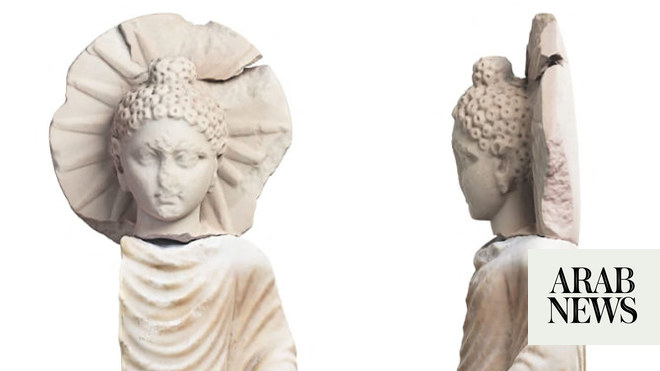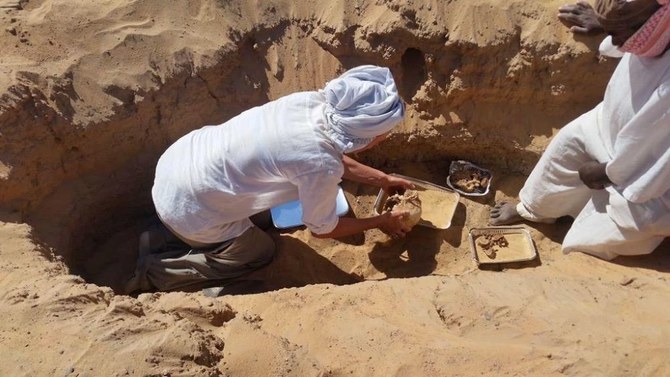
Statue was uncovered in Egypt"s ancient seaport of Berenike, now known as Medinet el Haras
New find sheds light on the ancient trade ties with India under the Roman empire
CAIRO: Archaeologists working in the ancient Egyptian seaport of Berenike have unearthed a statue of the Buddha dating back to the Roman era.
Experts involved in the Polish American dig taking place on the western shores of the Red Sea made the discovery during excavations at the city’s ancient temple, Egypt’s Supreme Council of Antiquities revealed.
The archaeological mission has been working at the site since 1994 under the council’s supervision.
Council secretary-general, Mostafa Waziry, noted that the project team had recently unearthed important new evidence of trade links between Egypt and India during Roman times.
He said: “Egypt was centrally located on the trade route that linked the Roman Empire to many regions of the ancient world, including India.”
Berenike was the main trading hub among many ports dotted along Egypt’s Red Sea coastline during the period, handling ships laden with products such as pepper, semi-precious stones, textiles, and ivory arriving from India.
The goods were then transported on camels across the desert to the Nile River to be shipped on to Alexandria and, from there, to the rest of the Roman Empire.
Mariusz Gwiazda, director of the mission’s Polish team, said that the Buddha statue was probably made from stone extracted from an area south of Istanbul or may have been sculpted locally in Berenike and dedicated to the temple by one or more rich merchants from India.
“The statue, which is 71 centimeters high, depicts the Buddha standing and holding part of his clothes in his left hand. There is also a sunray that surrounds the Buddha’s head, which indicates his radiant mind, and next to him there is a lotus flower,” Gwiazda said.
During the temple dig, archaeologists also uncovered an inscription in Sanskrit dating back to the period of Roman Emperor Marcus Julius Philippus (244 to 249), known as Philip the Arab.
Steven Sidebotham, director of the American team in the mission, said: “It seems that the inscription was not from the same date as the statue (of the Buddha), which is probably much older, as other inscriptions in the same temple were in Greek, dating back to the early first century.”
Two second-century coins from the middle Indian kingdom of Satavahana were also found.
Berenike, 140 kilometers south of Marsa Alam, was founded in 275 B.C. by Egyptian King Ptolemy II (283 to 246 B.C.) who named it after his mother.
The city was one of the key transit points for long-distance trade between the Mediterranean Sea and the Indian Ocean and during the Roman era developed into a prosperous center.
Human remains and other artifacts found earlier by Sidebotham’s team showed that Berenike was inhabited by people of all ages and backgrounds.












